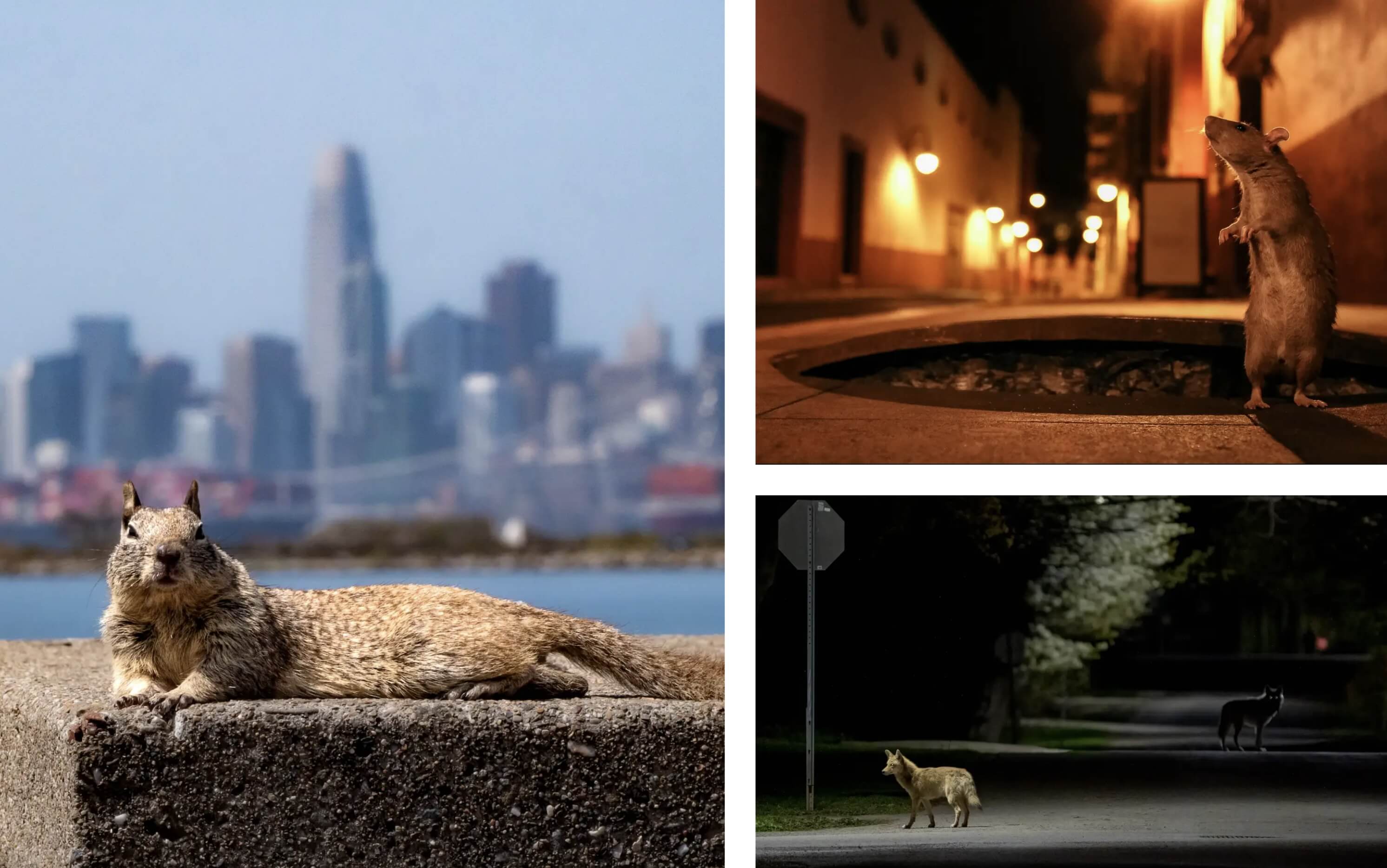
"Tanning in Style" by Nicolas Bamberski (left), "Life Beyond the Sewer" by Austin Montero (upper right), "Date Night" by Andrew Interisano (bottom right).
Wild animals have always made great subjects for photography. With urban wildlife photography, you don’t have to go to the far reaches of the world to find your photo. Catching a deer or owl in your lens is just as rewarding in the city, with the added perk that stalking your shot is a lot easier if you’re doing it in your own backyard. With everything from rats to raccoons, deer, hawks, coyotes, and even mountain lions adjusting to urban habitats, many cities offer stunning opportunities for the wily photographer.
If you’re interested in getting in the game, here are a few simple rules to follow.